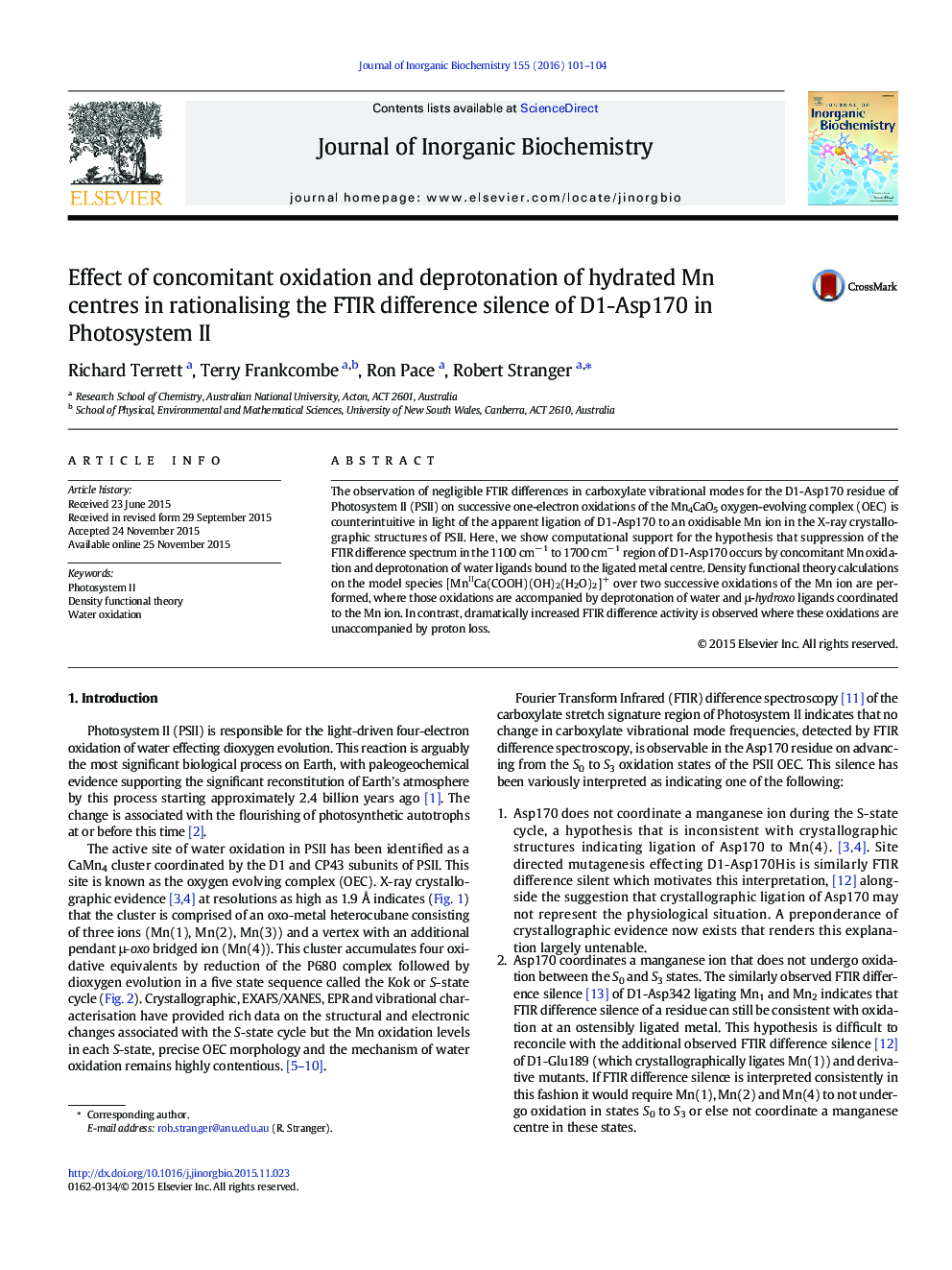| Article ID | Journal | Published Year | Pages | File Type |
|---|---|---|---|---|
| 1316980 | Journal of Inorganic Biochemistry | 2016 | 4 Pages |
•We model oxidation of a biomimetic metal centre with deprotonation of attached ligand.•Infrared difference spectra are computed for oxidation with and without deprotonation.•Concomitant oxidation and deprotonation was found to suppress difference spectra.•Results are relevant to assignment of metal ligation and oxidation state of Photosystem II.
The observation of negligible FTIR differences in carboxylate vibrational modes for the D1-Asp170 residue of Photosystem II (PSII) on successive one-electron oxidations of the Mn4CaO5 oxygen-evolving complex (OEC) is counterintuitive in light of the apparent ligation of D1-Asp170 to an oxidisable Mn ion in the X-ray crystallographic structures of PSII. Here, we show computational support for the hypothesis that suppression of the FTIR difference spectrum in the 1100 cm− 1 to 1700 cm− 1 region of D1-Asp170 occurs by concomitant Mn oxidation and deprotonation of water ligands bound to the ligated metal centre. Density functional theory calculations on the model species [MnIICa(COOH)(OH)2(H2O)2]+ over two successive oxidations of the Mn ion are performed, where those oxidations are accompanied by deprotonation of water and μ-hydroxo ligands coordinated to the Mn ion. In contrast, dramatically increased FTIR difference activity is observed where these oxidations are unaccompanied by proton loss.
Graphical abstractDensity functional theory modelling of the water oxidising complex (WOC) in Photosystem II shows that the observed FTIR difference silence in the carboxylate stretching region of the Asp170 residue upon successive Mn oxidation can be rationalised if the oxidation step is accompanied by concomitant deprotonation of bound water ligands. In contrast, dramatically increased FTIR difference activity is observed when the Mn oxidation is unaccompanied by proton loss.Figure optionsDownload full-size imageDownload as PowerPoint slide
